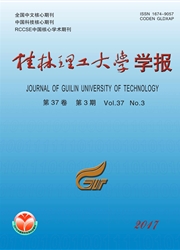

 中文摘要:
中文摘要:
为了深化对三水盆地古近纪时期古气候的认识,以SB-01孔岩心沉积物为研究对象,通过分析其主量元素、与有机质相关元素的组成,并利用因子分析方法解析该元素组成的古气候意义,结合其他古气候指标,研究了三水盆地古近纪早期的古气候演化。影响岩心沉积物主量元素、与有机质相关元素化学组成的主要因素为降雨量与温度,且降雨量的影响相对更为重要。根据因子得分曲线的变化规律,三水盆地古近纪早期的古气候演化经历了较为干燥且偏冷→温湿→古气候条件快速变化、热湿与凉干交替出现→温湿为主的4个主要阶段。
 英文摘要:
英文摘要:
By correlated paleoclimate indicators,the paleoclimate evolution during the deposition of Lower Paleogene sediments from Core SB-01 in Sanshui Basin can be reconstructed through the analysis of the compositions of the major elements and the element correlated with organic matters and their paleoclimatic implications using the method of factor analysis,for further understanding of Paleogene paleoclimate of the basin.The main factors influencing the compositions of the major elements and the element correlated with organic matters are precipitation and temperature.Precipitation plays relatively more important role.Based on the change of the factors,the paleoclimate process of the Early Paleogene in Sanshui Basin can be obtained: Stage I(89.0 73.0 m) with drier and colder condition;Stage II(73.0-52.5 m) with warm and moisture condition;Stage III(52.5-22.5 m) a rapid change of climatic condition,alternation between hot-humid and cool-dry;Stage IV(22.5-0 m) with prevailing warm and moisture condition.
 同期刊论文项目
同期刊论文项目
 同项目期刊论文
同项目期刊论文
 期刊信息
期刊信息
